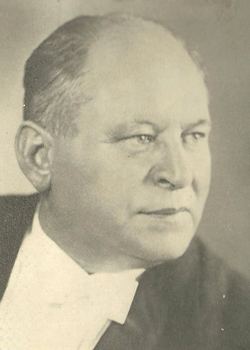Occupation Composer Name Hermann Blankenburg | Role Composer | |
 | ||
Born November 14, 1876 ( 1876-11-14 ) Similar People Carl Teike, Julius Fucik, Ernst Uebel, Johann Gottfried Piefke, Karel Komzak II | ||
the eagle of lille hl blankenburg massed bands conducted by the composer
Hermann Ludwig Blankenburg (14 November 1876 in Thamsbrück – 15 May 1956 in Wesel) was a German composer of military marches.
Contents
- the eagle of lille hl blankenburg massed bands conducted by the composer
- Hermann ludwig blankenburg mit paradeflaggen with parade flags op 60
- Blankenburgs March Compositions
- Marches include
- References
Blankenburg was the only son of three children of Johann Heinrich and Ernestine Friederike Koch Blankenburg. He was born with the middle name Louis but changed it to Ludwig later in life perhaps as a connection to Beethoven. Raised on a sheep farm in Thamsbrücke, he was expected to someday manage the farm. However, he showed a propensity for music starting with performing on the piccolo - a favorite instrument his entire life. His family agreed on his studying music as long as he promised to serve in the army for twelve years.
Blankenburg taught himself to play various instruments including bassoon, tuba, and violin and he conducted his school orchestra at the age of ten. He served actively in the military for two years 1896-1898, performing tuba in the band of the 6th Field Artillery Regiment in Breslau. After that his only service was prior to and during the early years of World War I in reserve bands. In 1913 he performed tuba in Field Artillery Regiment No. 43 in Wesel until 1915 when he got a medical discharge. He remained in Wesel for the rest of his life.
Blankenburg played in and conducted community bands as well as performing in the orchestras in Dortmund, Wuppertal and Duisburg. He also worked as a bricklayer and a policeman for a short time. His personal life was full of turmoil. In 1917 he was arrested by the military police from his former regiment for "deserting his family". He had married Magdalena Weidmann in Germersheim in 1898. In 1920 he married Käthe Trauthoff and was then arrested for bigamy.
Hermann ludwig blankenburg mit paradeflaggen with parade flags op 60
Blankenburg's March Compositions
A march he wrote when he was eighteen was submitted years later, in 1904, to Hawkes & Son for a march competition. Hawkes selected his march from over 500 submitted as first prize with the proviso the title could be changed from "Deutschlands Fürsten" (Germany's Princes) to "The Gladiators' Farewell" (Abschied der Gladiatoren). The march became popular, and Hawkes (also Boosey & Hawkes) would publish several more including "Adlerflug", "Festjubel", "Territorial", and "Mein Regiment" (the latter said to be the composer's own favorite march).
In the 1920s and 30s his marches attained European fame. Instead of accepting commissions, he composed marches when inspired. After World War II his compositional efforts dropped off. Despite the presence of military titles for many of his marches and his short military band service, Blankenburg's compositions were never accorded official recognition by Germany's military authorities.
Blankenburg is likely the most prolific march composer in history. For twenty years he composed at least one march a week. His one thousandth march was composed in 1928: "Der Tausendkünstler" (Jack of All Trades), dedicated to fellow composer Paul Lincke. He continued to compose marches for another 20 years after this. Blankenburg numbered his march compositions at 1,328, but he was careless in assigning opus numbers or in completing compositions. He also renamed some older marches with new titles. The highest opus number discovered is 1275 (for the march "Semper Paratus" likely published in 1936) and the lowest is 9 (for "Fliegerhelden Marsch"). There are long gaps in the sequence of opus numbers and many marches have no opus number assigned. At least 300 of his marches were published by thirty different publishers, but many more are lost or destroyed. Over 100 of Blankenburg's marches were recorded in the Heritage of the March series.
His marches are all in the characteristic German style and he was fond of writing soaring euphonium countermelodies which required a highly competent euphonium section prepared to perform in the upper register of the instrument. His marches also stressed the piccolo, clarinet, and cornet sections.
Opinions vary on the quality of his marches. Composer and arranger Gay Corrie has said it is difficult to tell his marches apart but found the euphonium countermelodies and woodwind figures admirable. Commander Charles Brendler of the United States Navy Band 1942-1962 considered him the greatest march writer who ever lived.
At the age of 60, he was made an honorary citizen of Thamsbrück. In 1976, Wesel changed the name of the street where he lived from Gartenstrase to Blankenburg-strasse to commemorate the 100th anniversary of his birth. There is also a street in the community of Haldern in Rees, Germany named for the composer.
A few months before his 81st birthday, Blankenburg intended to compose another march, but he died in Wesel in 1956 before accomplishing this.
